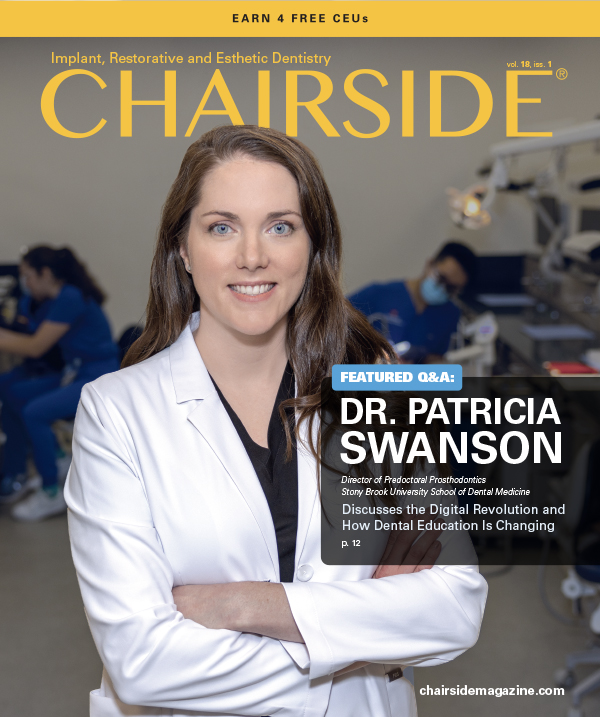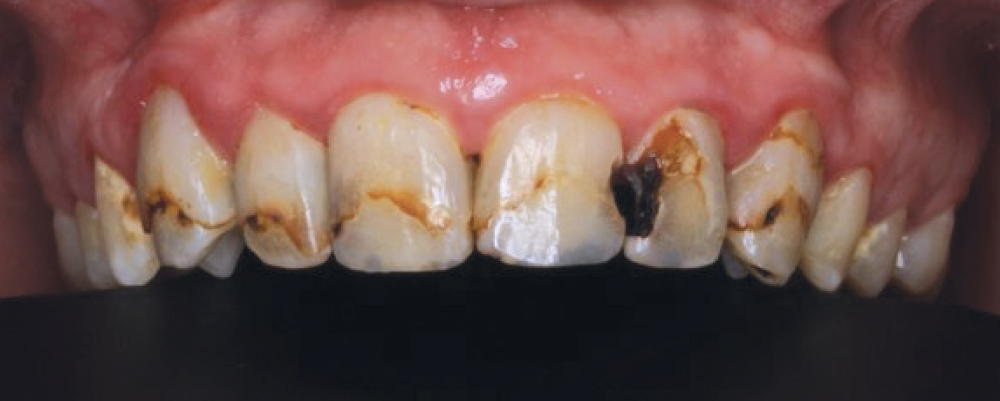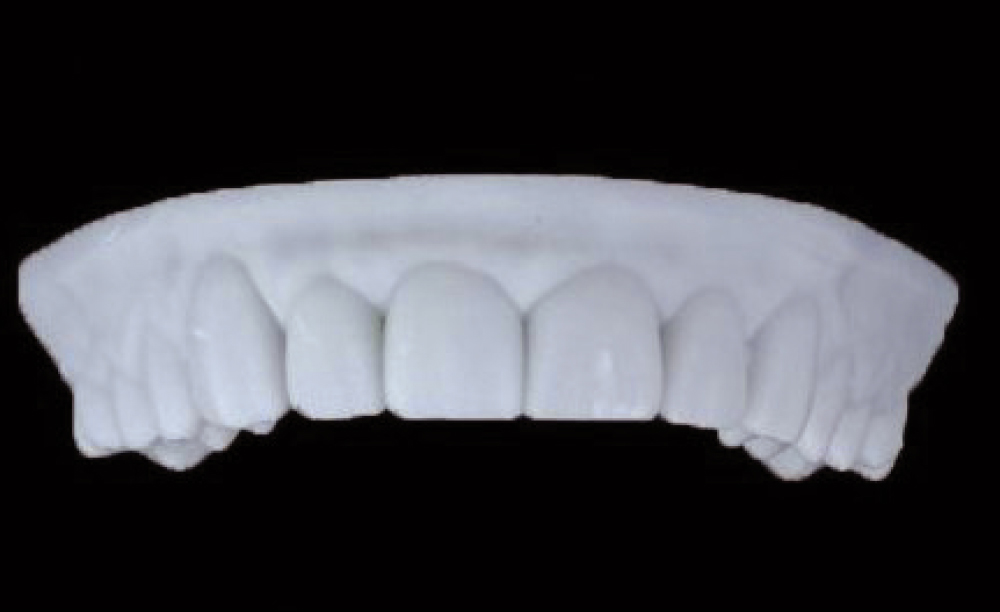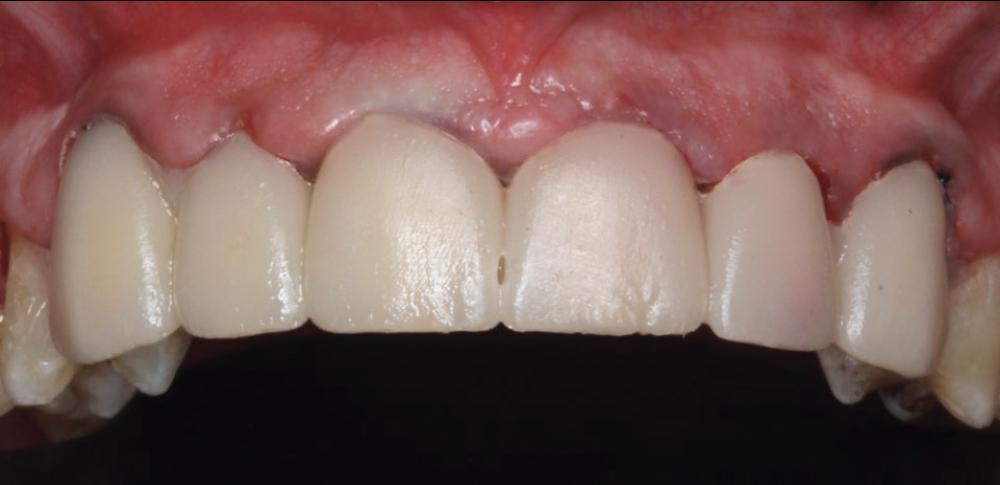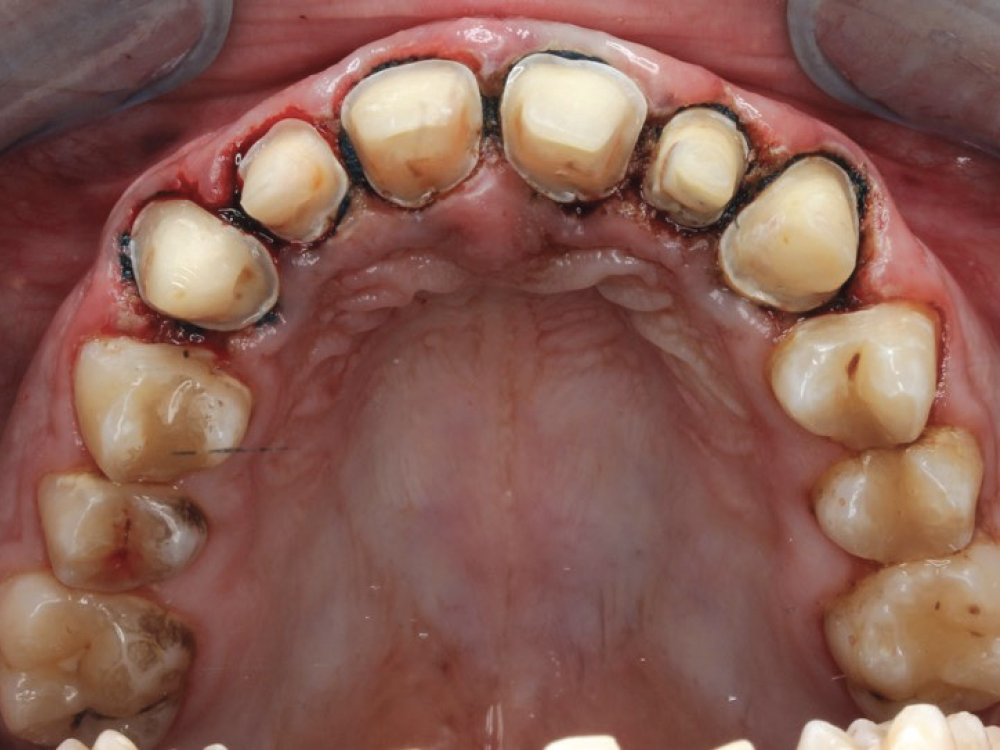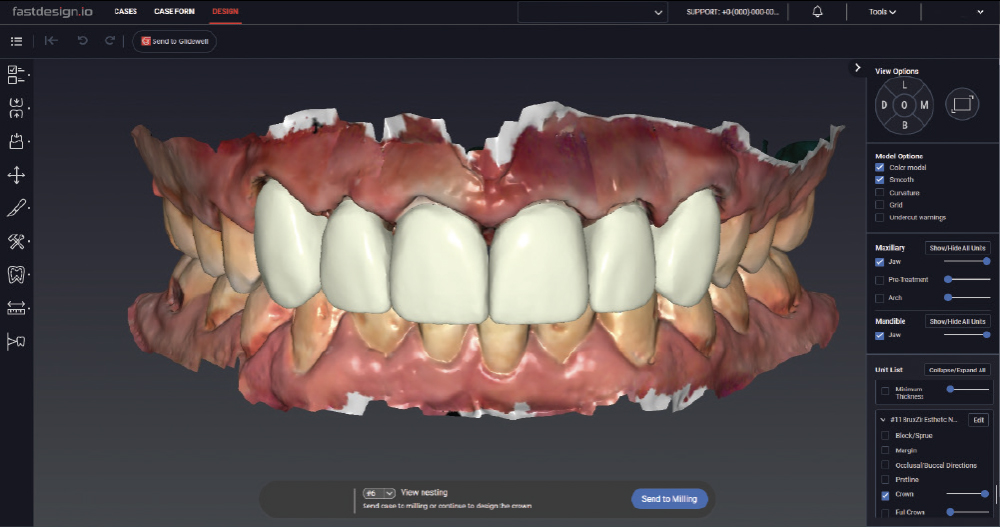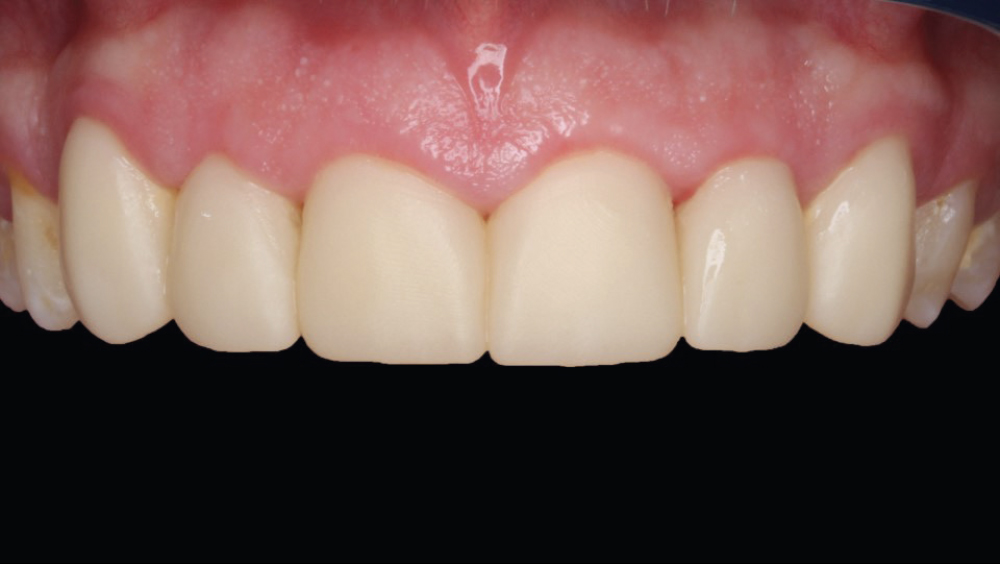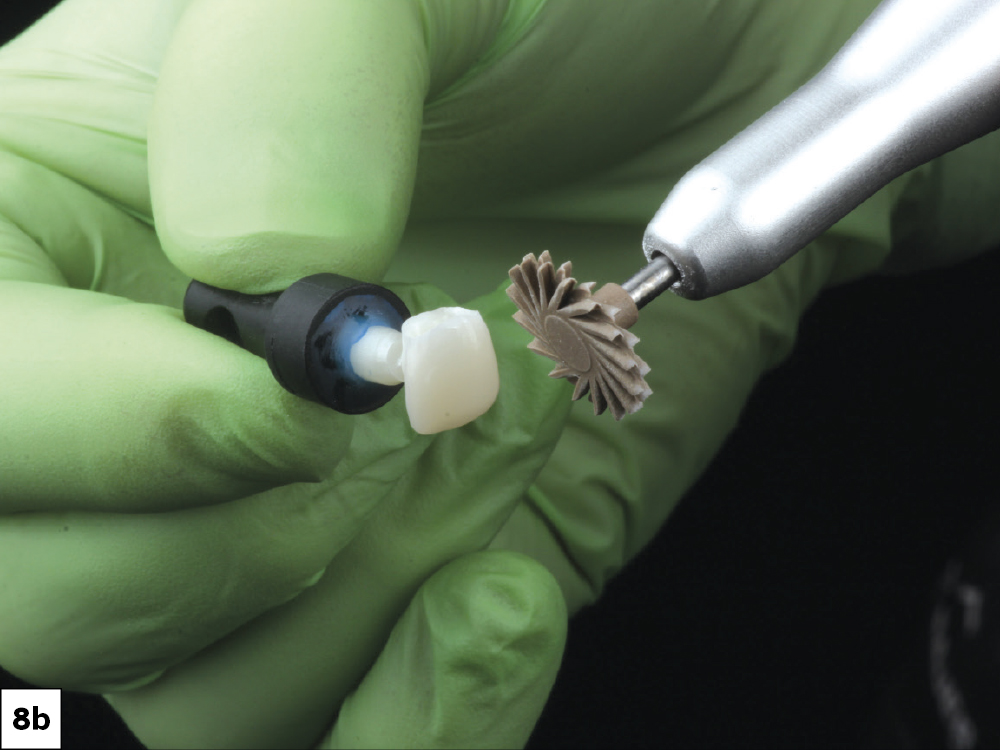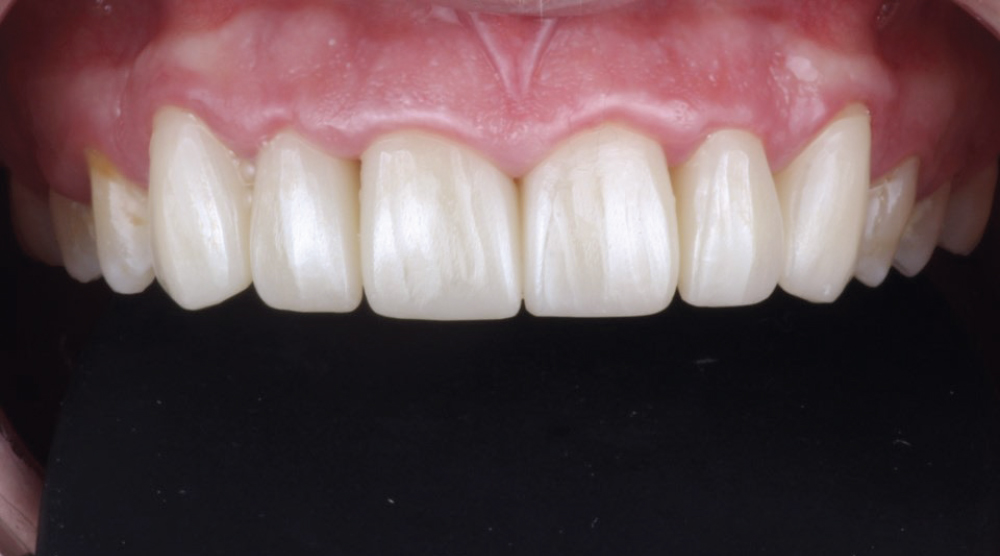Solving a Difficult Esthetic Challenge with BruxZir® Esthetic NOW
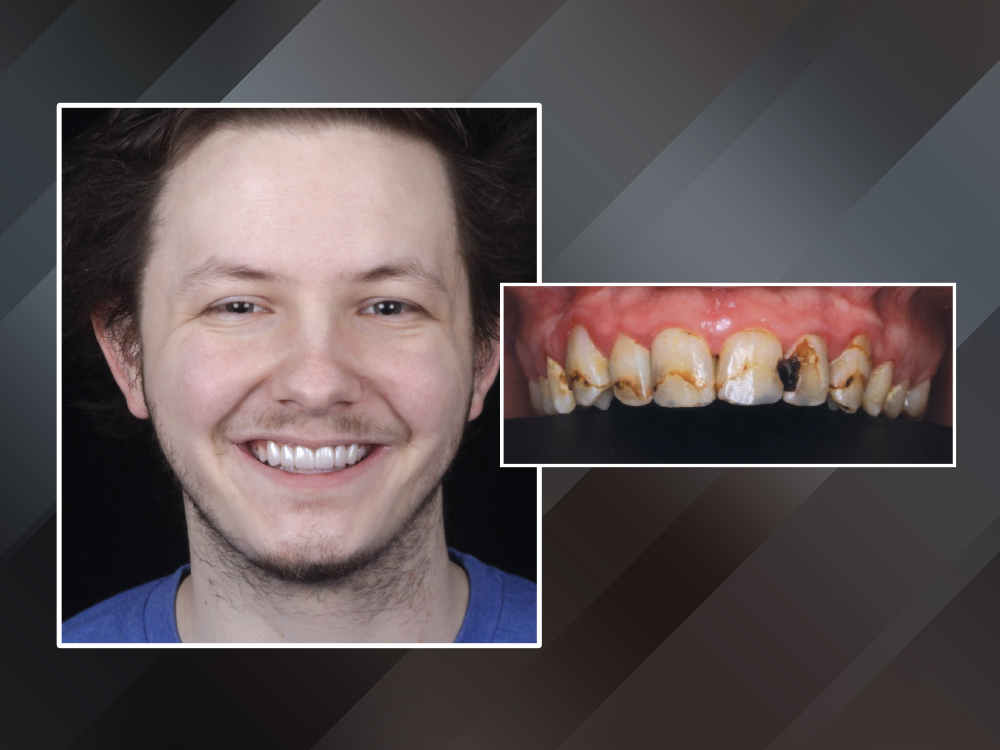
This patient sought my care because he was having difficulty finding a job due to extensive decay in the anterior, resulting in a very unesthetic smile. He had recently turned his life around after overcoming substance abuse and wanted his smile to reflect his newfound optimism.
This case report shows how I used both the dental laboratory and my in-office mill in a hybrid process to satisfy the esthetic needs of the patient. Using the laboratory’s diagnostic wax-up as a treatment plan, I merged the wax-up and pre-treatment scans to design and mill BioTemps® NOW temporaries (Glidewell; Newport Beach, Calif.). After validating the design in the provisionals, I milled BruxZir® Esthetic NOW (Glidewell) crowns to provide the long-lasting and esthetic solution he needed.
CASE REPORT
We decided to place BruxZir Esthetic NOW ... due to its combination of strength and esthetics.
CONCLUSION
The natural appearance and luster of the BruxZir Esthetic NOW crowns exceeded the patient’s expectations, and he was delighted with the results. With a newfound sense of confidence, the patient walked out of my office ready to grasp the opportunities before him.

